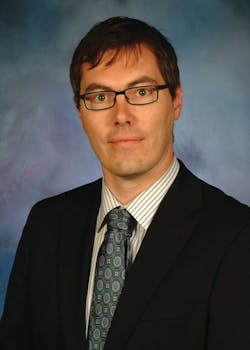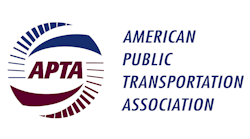Paul Grether, manager of Rail Services for the Southwest Ohio Regional Transit Authority (Cincinnati Metro) is managing Metro’s involvement in the Cincinnati Streetcar Project, currently under construction. Streetcars are Grether’s passion; previously he was the manager of Streetcar Development for the Metropolitan Atlanta Rapid Transit Authority (MARTA) where he provided program management for the Atlanta Streetcar project.
Metro is the FTA grant recipient for the Streetcar and the operator and Grether’s role includes managing consultants, operations planning, assisting with FTA compliance and providing streetcar subject matter expertise to the project.
Grether uses transit on a daily basis and understands the importance of the service for all of the different constituencies. He is skilled at engaging with riders and is a true ambassador for transit. He is involved in community groups and has publicly spoken about his transportation projects. In Atlanta he lead the effort to create transit exhibits, including the restoration of several antique transit vehicles at the Georgia State Transportation History Museum.
Grether values his participation with the American Public Transit Association (APTA), particularly on the subject of streetcar development. Streetcars are unique in that, in most instances, they are not being developed by organizations that are traditionally involved in transit. Developing and educating these organizations can only be done through partnerships with transit agencies. Grether has participated in many meetings with the FTA, peer reviews of other projects and other efforts aimed at furthering streetcar project implementation. At the 2013 APTA Rail Conference Grether was elected vice-chair/chair elect of the APTA Streetcar Subcommittee.
Grether is a 2011 graduate of Leadership APTA and has presented and published on various transit topics, particularly streetcar implementation, at various APTA and TRB conferences.
Other successes include developing key operational procedures, facilitating agreement between the power utility and the city of Cincinnati to allow the streetcar project to move forward, organizing an APTA peer review of the Cincinnati streetcar construction bids which provided critical justification of budget changes, and also assisting the city with integration of the streetcar project with the existing transit system.
Grether has worked both through the APTA Streetcar Subcommittee and through influencing projects that are under implementation to bring innovative ideas to fruition. His current initiatives as part of the subcommittee include the development of Modern Streetcar Vehicle Guidelines, working with FTA on the ADA regulations as they relate to streetcars, and general promotion of the streetcar mode both as a tool for economic development and a transportation tool.
“The thing that I like best about what I do is the constant different multi-disciplinary challenges. No two days are alike and that is what keeps it interesting and what I get up for every morning. One day it may be working in the field, the next day traveling and meeting with a vendor to manage design of a product and the next day at my desk working on a policy presentation for the board of trustees, for example. The common thread is that this business involves people and relationships. It is what we as an industry spend the most on, it is key to our investment justifications, it is the riders we serve, and it is ultimately the elected officials, public boards and electorates who decide whether we and our services and projects are worth investing in.
“I am trained as a city planner but with a heavy emphasis in engineering. I can think of no more interesting area to be working in than public transit, especially the area of streetcar development. Streetcars are certainly a ‘hot topic’ in the industry right now but if you look at the history of many urban neighborhoods in the United States they are there because of streetcars. I love that they are now being used as a tool to bring urban America back. The details of this implementation is my passion.
“The public transportation industry has a little of everything. I like that we deal with technology, policy, finance and so many other areas — as a previous general manager that I used to work for called it ‘big things that move.’ In the end it is a service business with unique attributes.
“Unlike other modes of transportation, public transit has the ability to have substantial positive impacts on people’s lives. Investment in transit is directly correlated to economic development and benefits all members of society regardless of income level, disabilities or age.
“Fundamental shifts are occurring in transportation in the United States. Automobile vehicle miles traveled appear to be on the decline, even when economic factors are taken into account. Cities are back, with generational attitudes toward urban living changing, casing demand for urban transit to increase both for today’s services and future investments.
“At the same time nationally, airline mergers are leading to services increasingly focused on major hubs causing service at secondary markets to decline sharply and increase in cost. In order to be best positioned to take on the challenges and new demands being placed on the transportation system, substantial investment in public transportation networks is required. This shouldn’t be limited to just urban transit systems, but we need investment in quality intercity bus and rail as well.
“While many challenges remain, particularly defining the split of roles and responsibilities for transit funding between the local, regional, state and federal levels, we figured it out for the Interstate Highway System and we can figure it out again. My vision for transportation in the United States is cities with growing urban transit circulatory systems connected by effective intercity services.”




